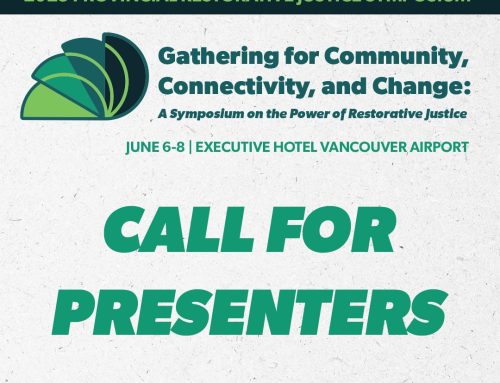What does Restorative Justice mean to me? I have been involved in the field of victim services since 1995 – first as a volunteer then in 2001 as a paid police victim services caseworker and in 2012 as the program coordinator of a police victim services unit. During this time, when the concept of Restorative Justice was introduced to me, it was deemed to be more beneficial for the offender and it set aside the needs of the victim. It wasn’t until I attended a conference in 2018 hosted in Halifax that I had an ‘ah-ha’ moment: Restorative Justice focuses on restoring the harm. Harm cannot be restored unless those who have been harmed have been considered and engaged. This is when I understood that Restorative Justice was not just about the offender but in fact it is a victim-centered process which endeavors to heal both the individual who has harmed and the individual(s) who have been harmed. Once I recognized this it was important for me to equip myself with the right information and the right connections in order to provide the clients I served with the appropriate information about Restorative Justice and their right to engage in that process.
I recognized that RJ is not about punishment but about understanding and appreciating one another and how our relationships impact each other – both positively and negatively. Often times when working with victims of crime, victims will have questions which can only be answered by the offender. Engaging with the court system, victims may feel further harmed when they learn the person who hurt them chooses to plead not guilty. For victims, the events of the incident are clear, particularly when they have sustained injuries, and they do not understand how this person could argue that they are not (legally) responsible for their actions. RJ can offer victims the opportunity for the offender to genuinely provide an apology and accept accountability for their actions.
The Canadian Victims Bill of Rights gives all victims of crime the right to information so they can be informed of their justice options – including Restorative Justice. It is the responsibility of police victim services and restorative organizations to develop healthy partnerships so we can make effective referrals and support clients should they choose an RJ process. We need to be part of a network of support for the people we serve and be knowledgeable of the resources and services that exist. Just like RJ, providing the best support we can begins with relationships. Find your people and go for coffee! Get to know each other on a human level so you are referring to a person rather than an RJ or victim services “program”.
With our client-centered approach, we must work together to build a network of support so our clients can make informed choices about what they need in their healing journey. I am hopeful that police victim services workers and RJ practitioners will understand and appreciate each other’s roles in supporting victims of crime; breaking out of the silos that exist across the justice system.







